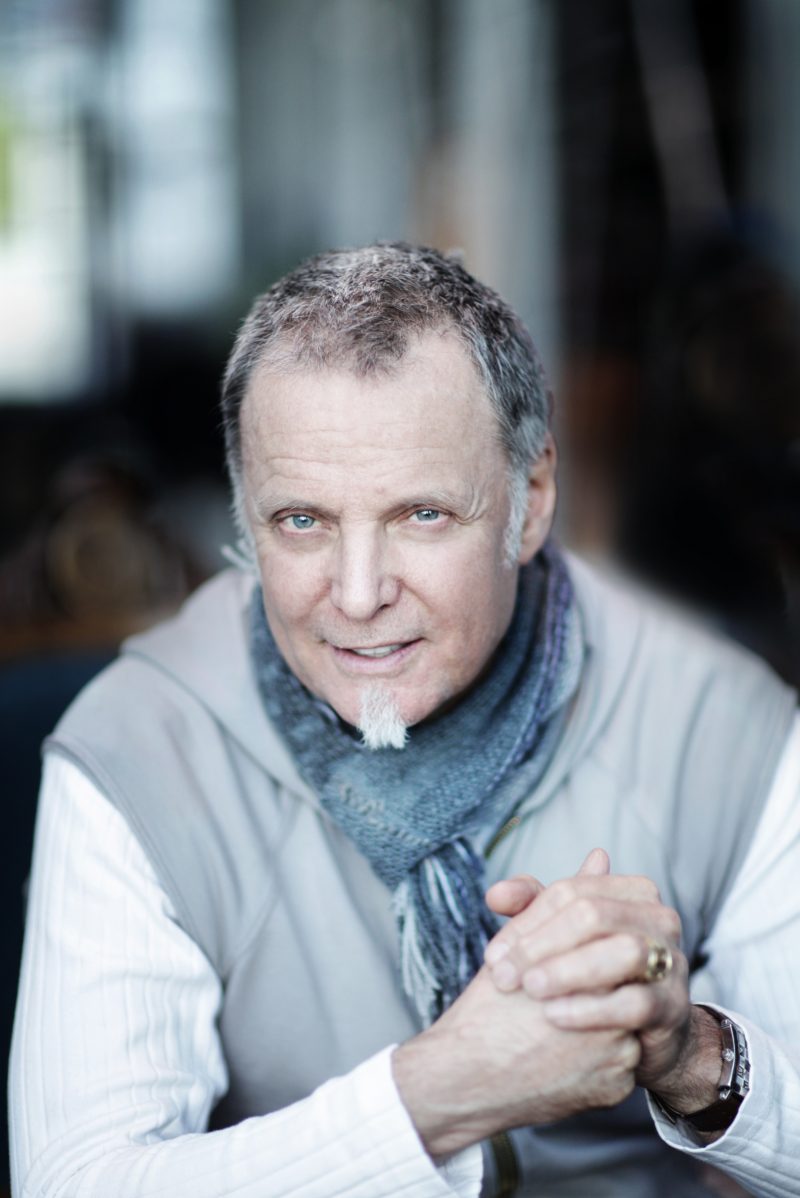#758 Fine shoes from the Fluemarket
Fluevog: 50 Years of Unique Soles for Unique Souls
by John Fluevog
Vancouver: LifeTree Media, 2019
$69.99 / 9781928055532
Reviewed by Elena Siemens
*
Founded by John Fluevog in Vancouver in 1985, Fluevog Shoes now has 27 stores in North America and Europe. Remarkably, Fluevogs have strong aftermarket value, selling on high-end arts and crafts, shoemaking, domestic arts, and vintage websites. The company even has its own Fluemarket Community website, where you can “Buy, Sell, or Swap used Fluevogs.”
Shoe designer and founder John Fluevog — who opened his first store in Vancouver’s Gastown in 1970 in the era of “candles and sandals”– charts his company’s rise and philosophy in Fluevog: 50 Years of Unique Soles for Unique Souls. Fashion, he writes, is becoming “more about individuality and self-expression.” Ormsby reviewer Elena Siemens, cultural studies professor and fashion historian at the University of Alberta, assesses the increasing reach and cultural influence of these iconic shoes. — Ed.
*
 Your Own Self is OK: 50 Years of Fluevog
Your Own Self is OK: 50 Years of Fluevog
“But I don’t use fashion as a way to fitting in. I use it as a way of being an individual. Your own self is OK,” John Fluevog declares in the entry on “Fashion” of his audacious new book Fluevog: 50 Yeas of Unique Soles for Unique Souls. In Chapter 6, “Stepping Out 2010-2019: Exceed Your Own Expectations,” he states once again: “The thing is, my shoes, they’re not just a product. They’re a culture. A message. An idea. They tell people, it’s OK to be different. Not just OK – beautiful.”[1]
Fluevog describes how in 2010, during the XXI Olympic Winter Games in Vancouver (his hometown), “people would come into the [Gastown] store speaking every language under the sun.” “It’s incredibly meaningful,” he continues, “to refuse to follow what everyone else is doing. That’s the feedback we got from people who walked into the store, people from Russia and China and Europe and South America.”[2]
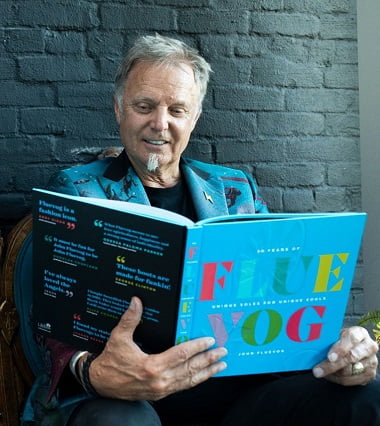
Fluevog also refuses to follow what everyone else is doing in selecting spaces and locations for his stores. He points out: “Don’t forget, with opening stores, we have to design in two realms: shoes and stores themselves. Even though all our stores look different, there’s a similarity of spirit to them.” His chosen spaces must be “amazing in [their] raw form, so we look for spaces with a certain energy.” Beyond Canada and US, “[they’d] been considering Europe for a long time […]. But somehow it had never been quite right, until Amsterdam.” He explains: “The city has always been on our list. There’s a real connection between the Dutch and Canadians,” and, equally important, “we loved the space itself. It was the only one we looked at that amazed us right away.”[3]
When in 2007 the lease on his Granville Street store was coming up for renewal, Fluevog was prepared to do anything to save it. This small store was his flagship, his constant: “To lose it would be like losing a part of myself.” He even had his wedding here — a powerful indication of his special attachment to the Granville Street location. He writes: “It was a surprise wedding. We invited people to come celebrate her [Ruth’s] birthday, and gave them a surprise wedding instead.”[4]
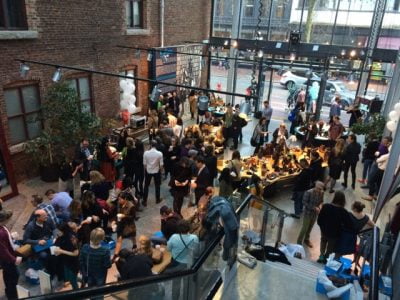
Fluevog’s work resonates with larger analytical readings, including Michel de Certeau’s The Practice of Everyday Life (1985). In turn, my Theatre In Passing 2: Searching for New Amsterdam is informed by De Certeau’s discussion of two opposing pedestrian figures: the walker and the voyeur. The voyeur privileges the official geography and observes the city from the detached panoramic perspective, whereas the walker chooses to follow the “second poetic geography,” defiantly constructing his or her own itinerary made up of meaningful spaces and places not visible from above.[5] Between De Certeau’s two pedestrian figures, the narrator of 50 Years of Fluevog clearly falls into the walker category. With its mix of diverse genres, Fluevog’s anniversary book features a “Tangle of Contents,” rather than the expected table of contents. Fluevog adds in brackets: “We don’t always do things in order.”
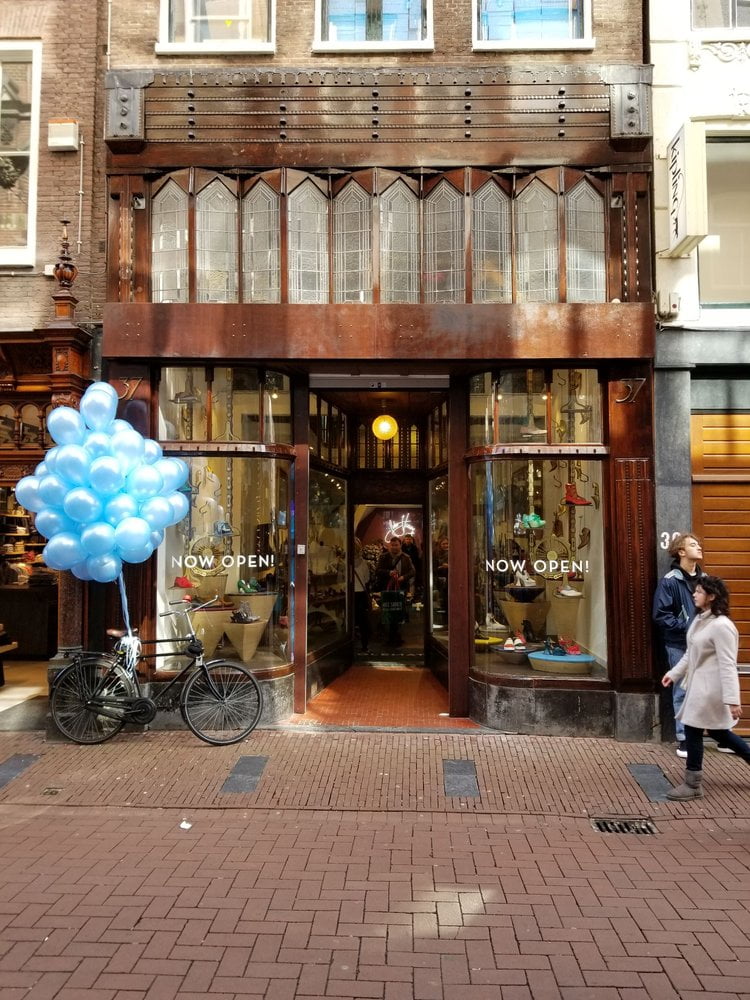
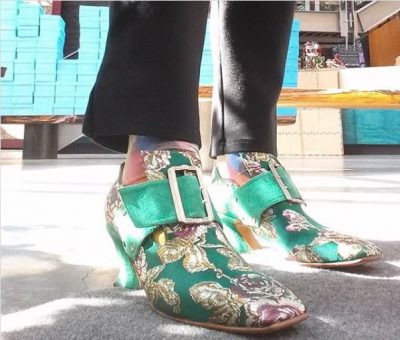
Chapter 3, “F Is For All Things That Give Hope,” provides further evidence of John Fluevog’s affinity with the walker. From 1980s to the mid-2000s, they “spread the word of Fluevog” through zines described by John Fluevog as “independent in voice and small in circulation, with an offbeat, low-tech design aesthetic.” Zines also “had a lot in common with movements like Dada and Surrealism,” and were popular with “subcultures like sci-fi fans and punk rockers.” In short, they “were perfect for us,” Fluevog concludes.[6]
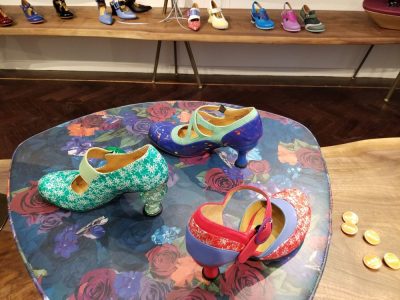
Today, the brand prints The Fluevog Post that, among other things, offers Fluevog’s creative writing under the heading “Shoe Stories by John.” For example, in “A Love Story On the Planet Zog,” the protagonist Alexander had been living “with a vague sense of global doom for some time,” and “he’d have been happy to be from Zog and not from this earth, for the world he lived in did not feel like home.” On the morning described in the story, when paying a visit to his neighbourhood coffee shop, Alexander meets the love of his life, and the “world and the future he saw was now clear and madly beautiful.” The story’s last line reveals that Alexander quits his job at a “generic running shoe store.”[7]
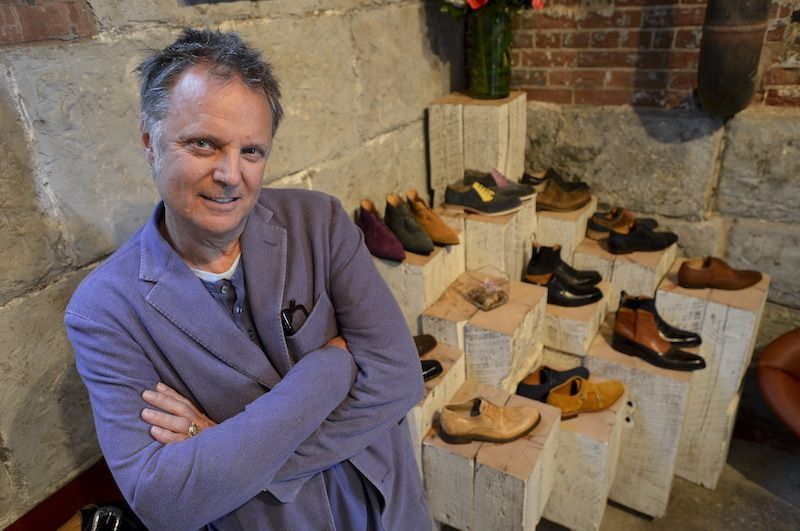
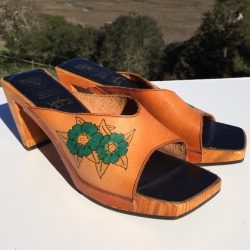
The cosmos has also inspired John Fluevog’s Meteor shoes, their soles inscribed with the designer’s personal message: “Created in the cosmos. Worn on Earth.” Fluevog writes: “On the bottom of most of my shoes, you will find a message. These messages are usually things that come to me while I’m drawing.” He asks, with regard to the Meteors, “Have you ever soared in your mind to another place and seen things in a new way? […]. When I did this shoe, with its clear sole, I felt joy.”[8]
Elsewhere I have traced the more recent incarnations, including Fluevog’s Meteors, of the iconic ruby slippers worn by Judy Garland in The Wizard of Oz (1939). I suggest that unlike “the ruby slippers that promise its wearer a safe return home, the Meteors celebrate the road as the destination.”[9] In this regard, Fluevog shows affinity with Salman Rushdie, who insists that, contrary to traditional interpretations, The Wizard of Oz is about “the joys of going away, of leaving the greyness and entering the colour […].”[10]
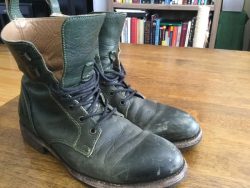
Fluevog’s rebellious sensibility naturally has attracted fellow walkers who choose to follow their own path. Fluevog’s list of clients includes many distinguished musicians from Alice Cooper to Lady Gaga. In her essay in The New Yorker, “Ecstasy and Ruin: Beck’s Aesthetic of Abundance,” Amanda Petrusich quotes Pharrell Williams, who admires Beck for knowing exactly “when to show up,” and for delivering things “his way.” Williams, Beck continues, has “out-careered all of his contemporaries,” and that he was “never really in the same lane as them:” “They were on a highway in Los Angeles or Seattle, and he was in a green pasture in his mind.” This equally applies to John Fluevog: to his staying power as well as his distinct itinerary. The two also share an appreciation for today’s digital world that, according to Beck, “makes you hungrier for the real human connection.”[11]

For his part, Fluevog argues that “everything is changing because of the Internet,” and that fashion “is becoming […] more about individuality and self-expression.” “In that environment,” he points out, “me staying true to my own thing has become more accepted.”[12] He adds that the fashion press has taken notice, and that, for example, in 2018 the New York Times printed a feature story titled “John Fluevog Is Cool Again. Maybe He Always Was.”[13] Fluevog store windows reproduced this line, along with John Fluevog’s tongue-in-cheek reply: “The New York Times Is Cool Again.”
*
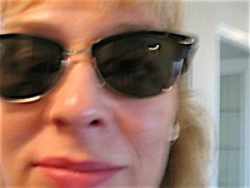
Elena Siemens is Associate Professor in the Department of Modern Languages and Cultural Studies, University of Alberta. Her research and teaching address Visual Culture, Urban Spaces, Performance, Fashion Media, Creative Non-Fiction, and Critical Theory. Her recent publications include Remembering Paris 1968: Fashion Theatre of Protest (2019), Subjective Fashion (2017), Street Fashion Moscow (2017), and Theatre in Passing 2: Searching for New Amsterdam (2015). Her recent curated student Pop-up exhibits include The Forecast (2019), Café Counterculture (2018), and Revolution 100 (2017).
*
The Ormsby Review. More Books. More Reviews. More Often.
Publisher and Editor: Richard Mackie
The Ormsby Review is a journal service for serious coverage of B.C. books and authors, hosted by Simon Fraser University. The Advisory Board consists of Jean Barman, Robin Fisher, Cole Harris, Wade Davis, Hugh Johnston, Patricia Roy, David Stouck, and Graeme Wynn. Scholarly Patron: SFU Graduate Liberal Studies. Honorary Patron: Yosef Wosk. Provincial Government Patron since September 2018: Creative BC
“Only connect.” – E.M. Forster
Endnotes:
[1] John Fluevog, Fluevog: 50 Years of Unique Soles for Unique Souls Vancouver: LifeTree Media, 2019), quotations from pp. 61, 130.
[2] Fluevog: 50 Years of Unique Soles, p. 130.
[3] Fluevog: 50 Years of Unique Soles, p. 132.
[4] Fluevog: 50 Years of Unique Soles, pp. 111, 112.
[5] Michel de Certeau, The Practice of Everyday Life. Translated by Steven F. Rendall (Berkeley: University of California Press, 1984); Elena Siemens, Theatre In Passing 2: Searching for New Amsterdam (Bristol: Intellect UK, 2015).
[6] Fluevog: 50 Years of Unique Soles, p. 75.
[7] John Fluevog, “A Love Story On the Planet Zog,” The Fluevog Post (Fall/ Winter 2019).
[8] Fluevog: 50 Years of Unique Soles, pp. 152, 155.
[9] Elena Siemens, “The Ruby Slippers Across Time, Space and Media.” Imaginations: Journal of Cross-Cultural Image Studies, 9: 2 (28 Dec. 2018)
[10] Salman Rushdie, The Wizard of Oz (London: BFI Publishing, 1992), p. 14
[11] Amanda Petrusich, “Ecstasy and Ruin: Beck’s Aesthetic of Abundance,” The New Yorker (2 Dec. 2019), pp. 34–41.
[12] Fluevog: 50 Years of Unique Soles, p. 147.
[13] “John Fluevog Is Cool Again. Maybe He Always Was,” New York Times, July 5, 2018.

